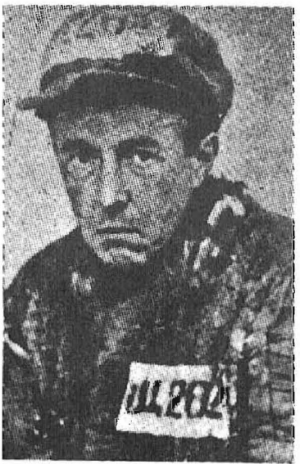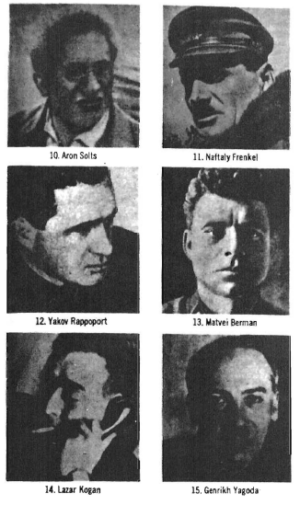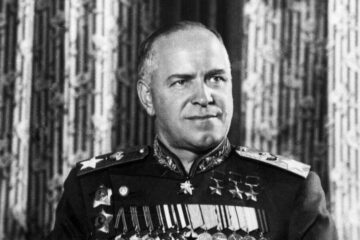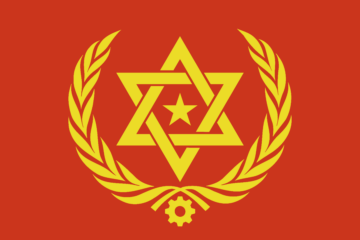Marxism’s Essence Bared
 The Gulag Archipelago: Part II, by Aleksandr Solzhenitsyn
The Gulag Archipelago: Part II, by Aleksandr Solzhenitsyn
reviewed by Nick Camerota
TO MANY OF US, Aleksandr Solzhenitsyn is as much an enigma as present-day Russia. A.S. (he is famous enough for elevation to the “initials only” caste) seems, at times, a contradictory ideological amalgam. Consequently, he has used — or has been used by — a variety of political interest groups. (ILLUSTRATION: Prisoner Solzhenitsyn)
America’s “responsible conservatives” (Buckley and the National Review crowd, Ronald Reagan, the Hoover Institute gang) ecstacise over A.S.’s much-vaunted anti-Communism. At the same time, members of the Establishment Left (the New York Times, a clutch of labor leaders, and trendy-left lights of lesser renown) have treated Solzhenitsyn with a certain deference. They haven ‘t bothered themselves much about A.S.’s anti-Communist panoply; beneath it they see a “dissident” (how they love that word) writer whose anti-Soviet stance sometimes serves their purposes. Even the crazy-left Ramparts magazine and the Trotskyite Pathfinder Press, quick to bark at anything they perceive as Stalinoid, have found some limited uses for A.S. But they, along with most of the Establishment Left, find a richer blend of dissent brewed by the brothers Medvedev, Yevgeny, Yevtushenko, and Andrei Sakharov (a heady mixture of philo-Semitism and communism) more to their taste.
The Soviets, of course, aren’t at all taken with A.S. and his anti-détente antics. They attempted a counter-attack through the Novosti press agency, a government appendage with close ties to the KGB, by selling the rights to a book by A.S.’s first wife, Natalya Reshtovskaya, to the American publishing firm of Bobbs-Merrill. In her tortured confessional, entitled Sanya: My Life With A.S., she accuses her former husband of every manner of moral turpitude. And, significantly, Natalya’s account smears A.S. with the tarbrush of anti-Semitism. The Soviets, mindful of the Jewish control of America’s communications media, sought to destroy the emigre author by charging him with the one “sin” the flaccid Western world presently finds unpardonable.
Long before the release of Natalya’s book there had been rumblings in the Jewish community that A.S. might, in fact, be an anti-Semite. However, the November 13, 1975, issue of the influential New York Review of Books seems to exonerate Solzhenitsyn. In a lengthy article on A.S., Leonard Shapiro notes:
“In the case of Soviet Jews, Solzhenitsyn has expressed sympathy with those who genuinely seek a new home in Israel…Those who are determined to see Solzhenitsyn as an anti-Semite will no doubt be reinforced in their prejudices by the fact that in his rogues’ gallery of Gulag torturers Jews play a very prominent part. Is he to be blamed for recording a fact of history, when the evidence shows that a very disproportionately large number of Jews, until the Great Terror of the Thirties, did indeed serve in the ranks of the Soviet secret police?” (emphasis added)

Case closed? Hardly. Shapiro hasn’t had the last word, and the debate among members of his tribe proceeds. Meanwhile, Solzhenitsyn continues his obeisances to the Jews — and drops a few more “facts of history” which cause certain of their number no small amount of anguish. But enough has been said of this unsavory subject. Here we are chiefly concerned with Gulag Two as a chronicle of A.S.’s spiritual struggle.
Solzhenitsyn writes about the horrors of the Gulag “solely from a sense of obligation.” He explains that “too many stories and recollections have accumulated in my hands, and I cannot allow them to perish.”
Once a devout Marxist, A.S. underwent a profound metamorphosis during his imprisonment in the Soviet destructive-labor camps. For it was there he experienced communism’s real essence. No Marxist dialectical shield could protect his body or intellect from the excruciating pain and mind-numbing brutality of that doctrine’s practical application. He views the camps as a cancer which metastasized and spread throughout the entire country.
Solzhenitsyn makes it clear that Stalin, far from being the “distorter” of the communist system he is portrayed as today, merely followed the master plan drawn by that system’s chief architect, Lenin. A.S. also points to a program of extermination methodically plotted by the creators and overseers of the Gulag. It is among the major ironies of the epoch that such creatures as Naftaly Frenkel, the Jewish communist who was the planner of the slave-labor system, fell victim to their own creation.
A.S. provides the reader with graphic descriptions of camp life. He demonstrates, through numerous examples, the animalization of the inmates (especially the younger ones), the suffocation of their spirit, and the annihilation of all human emotion. For others, however, the camps offered the possibility of spiritual rebirth. Part four of his work, “The Soul And The Barbed Wire,” is extremely impressive. I fear reprinting extracts; I might end up quoting the whole of it.
In some respects, Gulag Two is nearly impossible to review. As A.S. suggests: “No one can tell us the most important thing about these camps… (and) the whole scope of this story and this truth is beyond the capabilities of one lonely pen.”
One thing is obvious: A.S. not only preserved his humanity but emerged from his struggle a stronger man, one who offers the Gulag a blessing for fortifying his spiritual resources. Moreover, he writes with little bitterness toward his keepers. “Our torturers,” he remarks, “have been punished most horribly of all: they are turning into swine, they are departing downward from humanity.”
But Solzhenitsyn makes no attempt to spare himself from criticism. He once accepted an offer from camp authorities to turn informer, and he signed his pledge with the code name “Vetrov.” “Those six letters,” he reflects,” are branded in shameful grooves on my memory.”
Although I highly recommend Gulag Two (despite its choice as one of the ten best books of 1975 by the New York Times), a certain amount of criticism is due. For one thing, Solzhenitsyn propounds essentially conservative ideas. His sweeping condemnation of all revolutions — and his mistaken notion of National Socialism, in particular — will (and should) distress the most politically aware segment of our people. It must be borne in mind that the fire of revolution can also purify. But the revolutionaries A.S. most frequently excoriates are those who have escaped from the inner pages of Dostoevsky’s The Possessed — and whose brooding, alien spirits must seek only destruction in order to justify themselves.
Gulag Two is a stern rebuke to the Marxist mythmakers and certainly ranks as an important contribution to our understanding of communism. Americans would do well to read it.
* * *
From Attack! No. 43, 1976
transcribed by Vanessa Neubauer from the book The Best of Attack! and National Vanguard, edited by Kevin Alfred Strom





